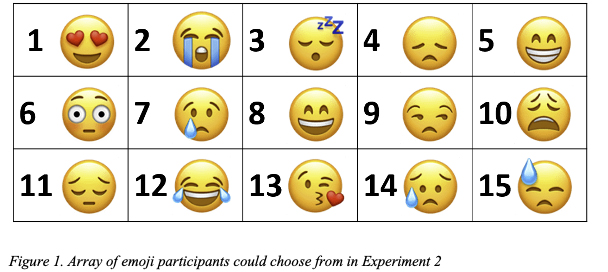
New research shows that where we come from can influence our use of emojis
Miami study highlights the importance of cultural background on our behaviors
By Carole Johnson, university news and communications
 A Miami University graduate student has found distinct cross-cultural differences in the use of the increasingly popular emoji images used in text messaging and other digital communication.
A Miami University graduate student has found distinct cross-cultural differences in the use of the increasingly popular emoji images used in text messaging and other digital communication.
LaCount “JJ” Togans is the lead author in a study titled, “Digitally Saving Face: An Experimental Investigation of Cross-cultural Differences in the Use of Emoticons and Emoji,” to be published in the Journal of Pragmatics.
A doctoral student in Miami’s psychology department, Togans and three other researchers from Ball State University conducted experiments to determine how people use emojis to clarify the meaning of their messages by comparing participants from two different cultural backgrounds — East Asian and American.

JJ Togans is a doctoral student in social psychology with graduate adviser Allen McConnell.
Because digital communication does not allow for those face-to-face nonverbal emotional cues, like a smile, emojis are becoming more and more common as a replacement for physical facial expressions.
“We don’t know as much about why people use certain emojis in certain situations,” he said.
This question led Togans to pursue the study based on his past research interest in understanding how and why people from different cultural backgrounds think and behave.
“What I always find intriguing about cross-cultural research is seeing evidence that what we assume to be true about human behavior in one culture is not necessarily true in another,” he said.
For instance, American culture values uniqueness, independence, and direct forms of communication. In contrast within many East Asian cultures, such as South Korea and China, social relationships, intragroup harmony, and indirect or passive forms of communication are the norm, Togans explained.
Based on these universally defined cultural differences, Togans and his colleagues’ predicted that East Asians would use more emojis in their text messaging. They did. The experiments they conducted also quantified that East Asian participants were more careful in which emojis they used in situations, being more sensitive to show their concerns for others.
“We also found that greater emoji use was significantly associated with interdependent values, such as being concerned for group success over individual success,” he said.
For instance, the participants were asked to communicate praise to a friend for winning an award. The researchers predicted they would use more positive emojis than the American participants. They were right.
“Our findings paint a broader picture about the relationship between culture, psychology, and communication,” Togans said.
The study highlights the importance a person’s cultural background plays in behavior.
“In other words,” Togans said, “Growing up in a culture that values maintaining positive social relationships and not offending close others results in people tending to use more indirect forms of communication, such as facial expression in face-to-face communication and use of emoji/ in digital communication.”
Lead author LaCount “JJ” Togans is a doctoral student at Miami university; co-authors are Thomas Holtgraves, Gyeongnam Kwon, and Tania E. Morales Zelaya, of of Ball State University.
